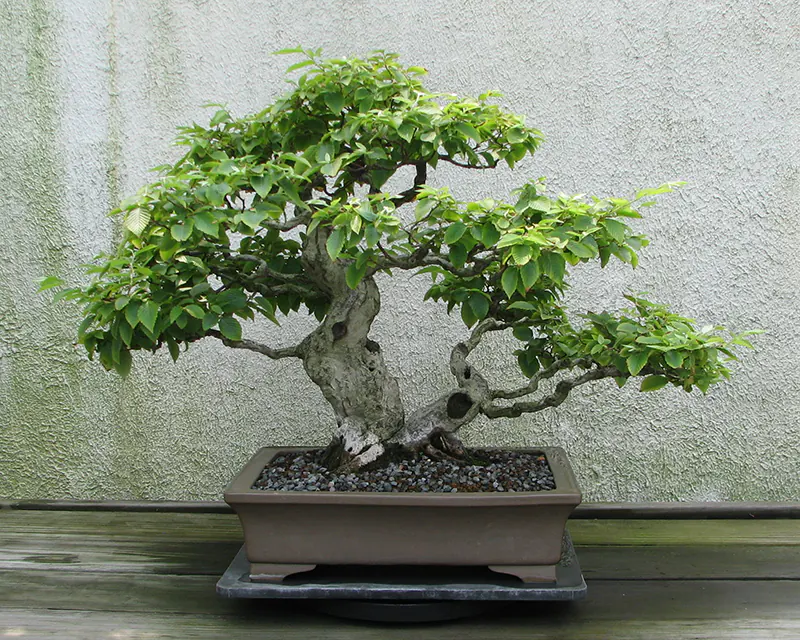Ultimate Guide to the Hornbeam Tree
The Hornbeam tree is a majestic specimen, with hardy stems and leaves all year round. As part of the birch family, the most popular ones are of the Japanese, European, and American variety.
In this guide, we’ll show you everything you need to know about the Hornbeam tree, how to care for it as a bonsai, and what methods work for propagation. You’ll also see sections for uses, features, and common issues.
Here's what you'll find in our Hornbeam tree bonsai species guide:

Quick Info Sheet for the Hornbeam Tree
🌞 – Early morning sunlight for a few hours, shade in the afternoon
💦 – Daily watering in the warmer months, don’t let the soil dry out
🍏 – Feed liquid food once a week in summer, but not in winter
✂️ – Design pruning in spring, maintenance pruning in autumn
🎍- Repot every three to five years
🐛 – Mold, fungi, and mealy bugs may cause issues
🥜 – Seed propagation is best, but cuttings and air-layering also work
🏠 – Top uses include light construction, decoration, support, and machinery
Hornbeam Scientific Classification
- Clade: Angiosperms
- Clade: Eudicots
- Clade: Rosids (Rose)
- Order: Fagales (Beech)
- Family: Betulaceae (Birch)
- Subfamily: Coryloideae (Hazel)
- Genus: Carpinus (Hornbeam)
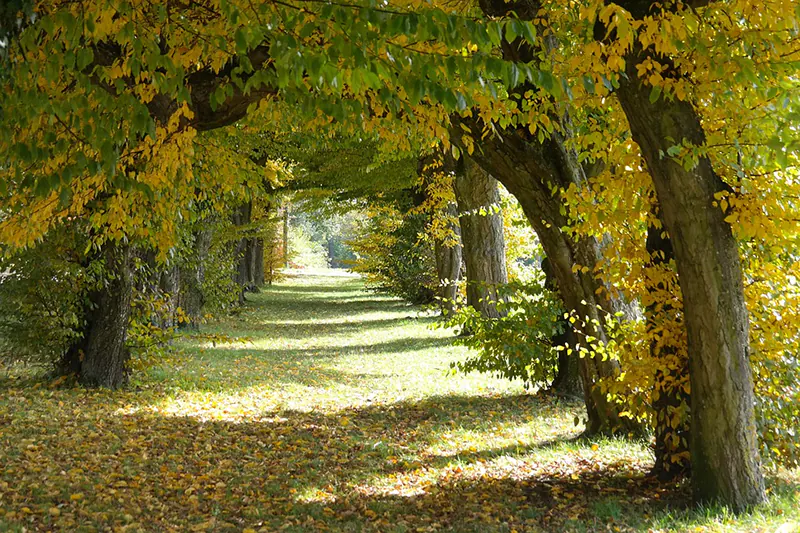
Information on the Hornbeam Tree
You may know the hornbeam by other names, as many cultures have given nicknames based on a few qualities. The most popular alternative titles are ironwood and musclewood due to how robust the wood is. You’ll hardly see it crack or break, even under heavy pressure.
As small trees in the wild, they’re ideal for your garden, but even more so as bonsais for your home. If they’re crowded with other trees or there’s too much shade, you’ll notice how it spreads out to find as much sunlight as possible. Conversely, the hornbeam tree keeps its branches and leave clustered together when there’s enough light. Using this technique works well when shaping and styling your bonsai.
Animals and humans love using the hornbeam for shade in the wild. Many small mammals and birds live within the hornbeam’s almighty upper structure, and they may even feed on the fruit that appears after blooming. The flowers attract butterflies and moths, such as Monarchs and luna moths. If you have your bonsai outside at the right time, you’ll notice them fluttering around the blossoms.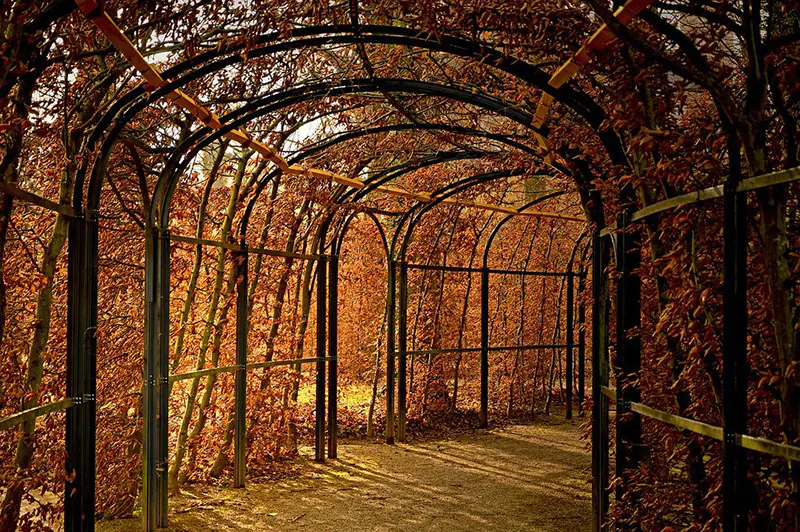
What the Hornbeam Tree Looks Like
When you’re out taking a walk in the field, it’s quite easy to identify a hornbeam tree. All you need to do is study the basic elements of all trees to identify specific aspects. Here’s what to check with regard to the leaves, flowers, and fruit.
Leaves
You’ll find that the hornbeam tree has similar leaves to those of the beech. The shape is slightly oval, ending with a fine tip at the one end. The difference is that the hornbeam’s leaves are smaller, and they have toothed as opposed to wavy edges. In Autumn, the green leaves may become orange, yellow, or red, depending on the species you have.
While the hornbeam is deciduous, it may retain its leaves in winter if it’s warm enough. The leaves alternate around the branch, and it has a simple structure.
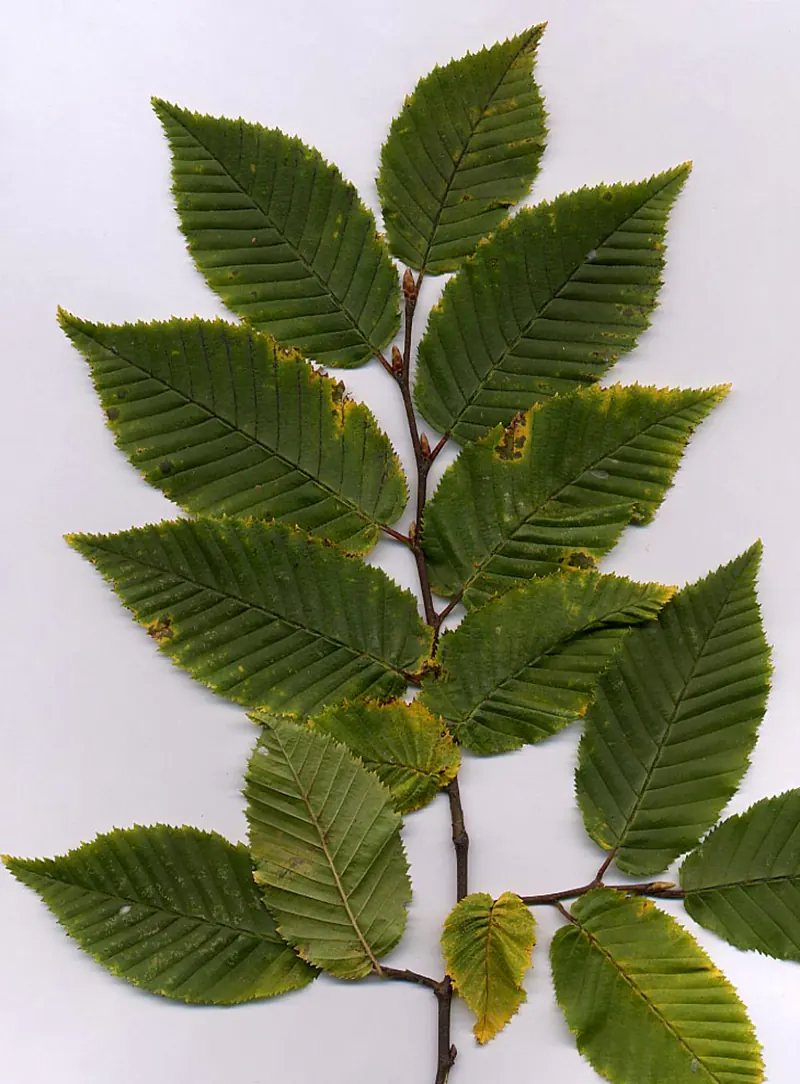
Flowers
With the hornbeam tree being monoecious, the male and female parts live on the same tree. Both the male and female organs consist of catkins, making them ideal for wind dispersal in autumn.
Wind pollination is the primary method of reproduction, which is why the trees in this genera fare so well. Insects usually use the hornbeam for food rather than assisting in pollination, which we’ll touch on a bit later.

Fruit/Seed
You may be familiar with the term samara. If not, it’s when the fruit or nut is enclosed with an asymmetrical wing or leafy capsule. When the fruit falls from the tree, the shape causes it to flap around like helicopter blades, soaring through the air until it lands at a new destination.
When it comes to identifying which hornbeam tree you have, it’s usually done by inspecting the shape and size of the samara. The catkins can produce up to 30 seeds at a time, which is excellent if you plan on growing more bonsais. Stay tuned for when we discuss hornbeam propagation later!
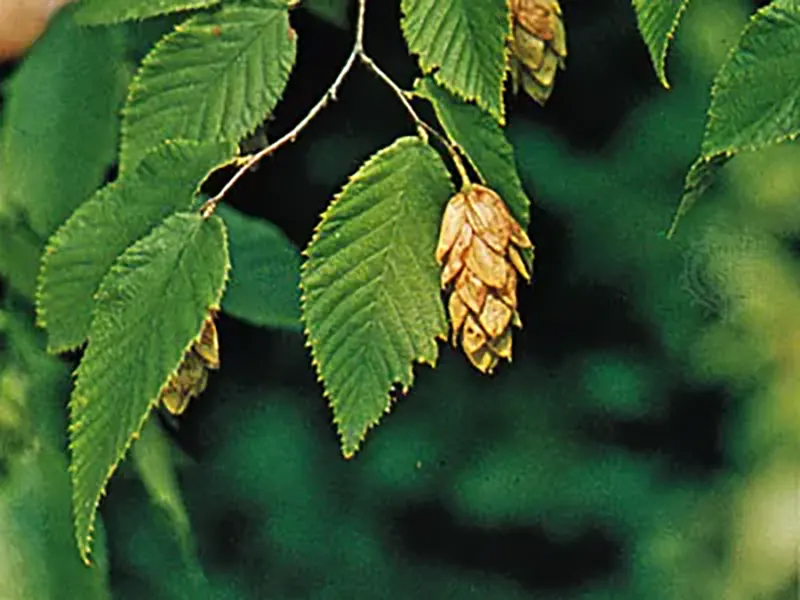
Different Hornbeam Varieties
There are about 30 to 40 hornbeam species in various locations, and possibly a few more that haven’t been accepted as part of the taxonomy yet. When it comes to bonsais, there are three main types of hornbeam trees we like to focus on:
- Carpinus caroliniana (American hornbeam): As you can guess by the name, this species is particularly popular in the United States. Americans usually refer to it as the blue beech, stemming from the bark’s color and being part of the beech order in the taxonomy. You’ll usually find it in eastern America and the south of Canada.
- Carpinus japonica (Japanese hornbeam): While this hornbeam tree is native to Japan, it’s grown and developed in several other countries. Thanks to its small stature, you can easily cultivate it as a bonsai, and is one of the top bonsai species in this genera.
- Carpinus betulus (European hornbeam): You’ll mostly find this tree throughout western Asia and several European countries. With its massive size almost twice as large as the American hornbeam, it’s mostly used for landscaping, especially on sidewalks and within company gardens. Still, it makes a stunning bonsai if you don’t mind how quickly it grows.
Caring for your Hornbeam Tree Bonsai
Now that you know more about the hornbeam tree and have fallen in love with it, we’re going to show you how to care for it as a bonsai. While some of the requirements are the same as one of the trees in the wild, there are specific needs you’ll need to take note of. Remember, you’re growing it in a pot instead of in the soil, which is why you’ll need to pay attention.
You can also check out our advanced bonsai tree care guide for more general details.
Where to place your Hornbeam for optimal sunlight
If you recall from earlier, we mentioned how the hornbeam tree responds due to varying degrees of sun and shade. If it openly receives more sunlight, the leaves and branches will cluster, while shade will make them spread more. You can use this part of nature to determine how you want your bonsai to grow.
However, it needs most of its sunlight from the morning hours with shade in the afternoon. As a bonsai, the hornbeam tree’s leaves may burn from the afternoon sun. You can place it outside all year long, or keep it indoors as long as it has sunlight for a few hours in the morning.
The most important aspect is checking on how it’s doing outside in the winter. The roots don’t do too well with frost, and the foliage hates high winds. If you have it protected from these elements outside, you’ll never have to bring it inside. If not, well, you know what to do. Give it a cozy spot in your home.
Watering and humidity requirements
Hornbeam trees love plenty of water in the warmer months. If the roots start to dry out, you’re going to have problems keeping your bonsai alive. Feel the soil and give water as soon as you feel that it’s becoming dry. Take care not to overwater the soil either, as that can lead to root rot, giving you more issues than you bargained for.
In winter, you’ll want to slow down the watering, but you still need to make sure it receives enough. When you feel the soil, you’ll need to learn the difference between moisture and dampness. You can also use a water tray to provide liquid from the bottom if you’re not sure. The hornbeam tree will drink when it’s thirsty.
You’ll also want to keep humidity levels high, especially outside. If the air is too dry, you can either use a mist bottle or a bonsai humidity tray. The latter is better suited, specifically for keeping your bonsai indoors so that you don’t mess on the floor.
Fertilizing and feeding your Hornbeam Tree
While your hornbeam tree is growing in a pot instead of in the ground, it won’t have access to necessary nutrients and trace elements. You’ll need to feed it different amounts in every season, with most of it during the growing seasons. How much you feed them depends on how quickly your bonsai species grows.
There are two types of fertilizer: liquid and solid. With the first option, you’ll need to feed it once a week diluted in water from spring to autumn. When winter arrives, don’t give it any food, as that’s when it rests for the coming spring.
We recommend the solid pellets instead of the liquid solution. They last for an entire season, which means you only need to replace the food every two to three months or once every month, depending on the quality. Once again, steer clear of feeding your hornbeam tree in the winter.
Pruning and shaping
There are various pruning techniques you need to use for your hornbeam tree. Firstly, remove massive branches in spring when you see new buds appearing. You can also cut back with two sets of leaves remaining on the stem, which will encourage new branchlets to appear and spread out for better ratification.
From autumn into winter, you can do some maintenance pruning. Don’t remove leaves that still look healthy, despite the color change. The only leaves you should remove are ones that are too large for your bonsai or disfigured and dying ones. Never remove all the leaves off a branch or cut back completely to the stem. You should always leave a small piece where it connects to the rest of the tree.
When shaping your hornbeam bonsai, you’ll want to use the clip-and-grow technique. Yes, you can also use bonsai wire, but it might bite into the branch when the growing period returns, making the bark look ugly. You should always check that the wire isn’t choking the wood. Another alternative you can try is using weights, or even anchoring a branch to the side of the container by drilling holes.
How to repot your Hornbeam
With younger hornbeam bonsai trees, you’ll want to repot it every two to three years. Since the pot is probably small, you’ll need to pay attention to signs of the roots taking over the soil or extending out of the drainage holes. You may need to transplant the tree sooner than expected or give it a larger container.
As the hornbeam matures, its roots won’t grow as quickly. You’ll be able to extend the repotting time to every four to five years. That doesn’t mean you can sit back and simply wait for the time to pass. It’s still your responsibility to check the soil to make sure there’s enough air for the roots to breathe and grow.
Wait until the end of winter or start of spring. If you see new growth appearing, it’s the right time to repot your hornbeam tree. Carefully clean the roots of the old soil and prune back some of the longer ones. You’ll need to judge to see if you need a bigger bonsai pot.
Once cleaned and trimmed, you can soak the roots in water while you prepare the new bonsai soil. Make sure you drench the soil for the same amount of time so that the moisture sinks in and increases the saturation rate. Once ready, you can place the soil and bonsai tree back in the container. Watch for signs of new leaves forming to see if you’ve succeeded. You may need to anchor the roots to keep the bonsai in place.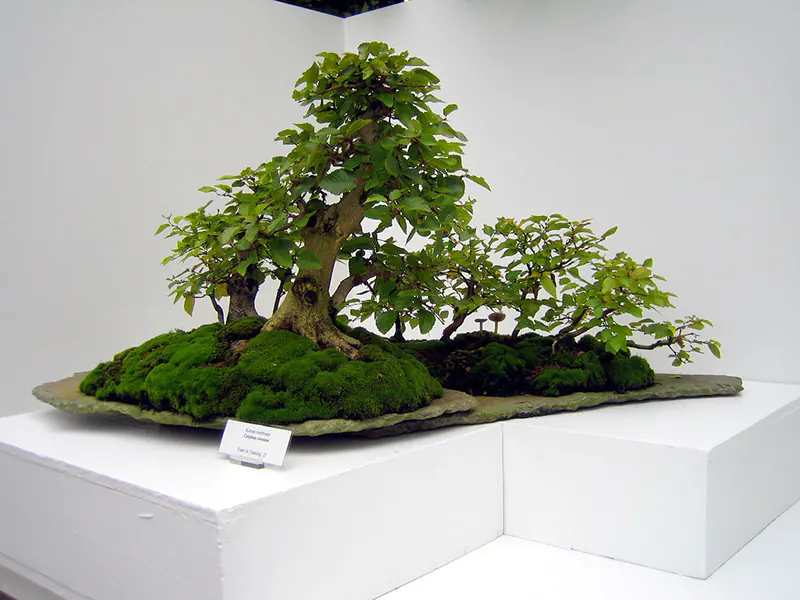
Image source
Common Issues with the Hornbeam
You’ll find that the Japanese, European, and American hornbeam trees have strong resilience against pests and diseases. If you grow your bonsai with the utmost tree care, you shouldn’t find too many problems with it.
Having said that, here are the most common issues with the hornbeam tree:
- Root rot: This fungal disease usually occurs when you overwater your bonsai or in really damp conditions. The darkness in the soil, minerals, and excess water lead to the rot eating away at the roots, which also gives off a terrible smell. It’s best to change the soil completely in this situation.
- Mildew: If you see powdery white deposits on the leaves, that means you’re dealing with mildew. The most probable cause is the lack of sunlight and proper ventilation. While moving your bonsai to a better spot will help, you can also dilute milk with water and spray the solution on the infected areas.
- Canker disease: This disease is usually a section that holds dead tissue. Leaves will change color, and the branch or stem will become brittle. If you don’t deal with it quickly, it can infect the entire hornbeam tree and cause your bonsai to die. That’s why pruning in summer and winter is so important, as you’ll remove the bad parts before they spread.
- Decay fungus: This terrible fungus eats away at the center of the wood, causing it to decay over time. The sad part is that you won’t be able to detect this issue on your hornbeam bonsai until it’s too late. The only steps you can take to prevent it is to give it the best care possible without any injuries.
- Leaf scorch: You’ll generally find leaf spot, burns, or scorch when the sun burns the tree at the hottest time of the day. That’s why it’s best to place your bonsai in an area that has shade in the middle of the day. However, it can also be a result of fungi on the leaves.
- Mealy bugs: Of all the bests that could cause chaos on your hornbeam bonsai tree, the mealy bug is the worst. It loves to sit between crevices, such as by the nodes of branches and the main stem, feeding on the tree quietly. They have hardened scales that protect them from harm. You can use insecticide or neem oil to help get rid of them.
Learning proper bonsai tree care is essential if you want it to remain strong and healthy for longer life. Read more details in our advanced guide!

Various Ways to Propagate the Hornbeam Tree
The method to propagate a hornbeam tree depends on the type you’re planning to grow. Some work best with seeds, while others can grow roots with cuttings. You’ll have to research the specific type, or you can contact us if you need more information.
Here’s a general overview for propagating a hornbeam tree if you want to grow your own bonsai.
Seeds
Growing hornbeam by seed is one of the more successful propagation methods. You don’t need to prepare it beforehand, making it a simple process to get started. When you collect the seeds in early autumn, make sure the husks aren’t dried out, as that means there are no viable seeds within them.
Prepare a bowl of water. Now, take a seed cluster and crush it until the seeds fall within the water. You’ll need to give them about eight hours to soak, after which you should see how many are floating. Those that haven’t sunk to the bottom can be discarded.
Place a loam mixture of soil in small pots. You’ll want to put 2 seeds in each pot, so you can start with small, square plastic containers for now. Take some acidic compost and layer it over your seeds, making sure to keep the topsoil moist with a sprayer.
Keep the hornbeam pots in a lightly shaded area for the winter, ensuring the soil remains slightly moist. When spring arrives, you can move them to the windowsill or a place with plenty of light. You should see the seeds sprout before the summer arrives. You can place a transparent bag over the pot to retain humidity and keep your seedling safe until it’s big enough to move to a bonsai pot.
Cuttings
While it may not be as successful, you can grow hornbeam trees from cuttings, specifically the European variety. You’ll need to take softwood cuttings in spring, or even in early summer. Choose a time when you see massive, fast growth in the leaves and stems.
The cutting should be about 2 to 4 inches long. Make sure you remove all of the leaves, except the uppermost ones. Then, use your fingers to pinch the lower end before you dip it in rooting hormones. This will help in forming roots faster than without the hormones.
You can now place your cuttings in a bonsai mix or loam soil. Put a transparent bag over the cuttings and pot so you can retain high humidity levels. However, you’ll want to open the bag about twice a week to provide fresh air. After about 6 to 10 weeks, give the cuttings a slight tug to see if there’s any resistance. You may even see fine roots on the lower end.
Air Layering
One of the more challenging techniques for propagating is via air layering. Many bonsai practitioners struggle to do so with these trees, but it is possible to do so. That just means you don’t have to feel like a failure if it doesn’t work the first time.
As with all air layering, you’ll want to find a stunning part of a hornbeam tree you’d like to turn into a bonsai. Look for gorgeous curves or knots on the bark. Once you know which piece you want, start removing the section of back where you want the roots to form.
Now, you’ll need to cut into the outer cambium layer that transports the nutrients up and down the tree. By doing so, you’re forcing the section to grow roots if the branch wants to survive. Wrap the open segment with sphagnum moss, a transparent bag, and wires. These keep everything in place while you wait for the roots to form.
It will take a few months to develop strong roots before you can cut the air-layered section from the tree to plant it. For a better idea of how the final product looks, you can watch this fascinating video.
Top Hornbeam Features and Uses
This section doesn’t really deal with bonsais. When it comes to the uses of the hornbeam tree, it usually refers to the actual tree in the wild. You wouldn’t really chop up bonsai branches to make machinery or support structures within homes. As a bonsai tree, it’s purely decorative and therapeutic.
For the actual hornbeam tree, we have the following uses:
- Ecological: many small animals, birds, and insects use the hornbeam for food and shelter. Autumn and winter moths gather around the flowers and leaves, while the common emerald may also make a home in the branches.
- Decoration: Hardwood billets are often dried out and used for decoration.
- Carpentry: Only used on rare occasions, as it doesn’t work well for most carpentry applications. Possible applications include piano actions, coach wheels, tool handles, and shoe lasts.
- Machinery: The hornbeam tree is used as small parts in simple machinery. For example, some components of windmills are made from its hardwood, specifically gear pegs.
- Other: Chess pieces, parquet flooring, and hardwood poles.
Final Thoughts on the Hornbeam Tree
Owning a hornbeam tree is a marvel to behold, whether in your garden or as a bonsai. Since it has that incredible resilience against diseases and pests, it will last you several years with the proper care. They can live for more than 300 years, which means you can pass them down to your children and their children.
Of course, that means you also need to pass on the knowledge of caring for the tree. If you’re lucky enough to buy or inherit a hornbeam, we hope that this guide has helped you.


